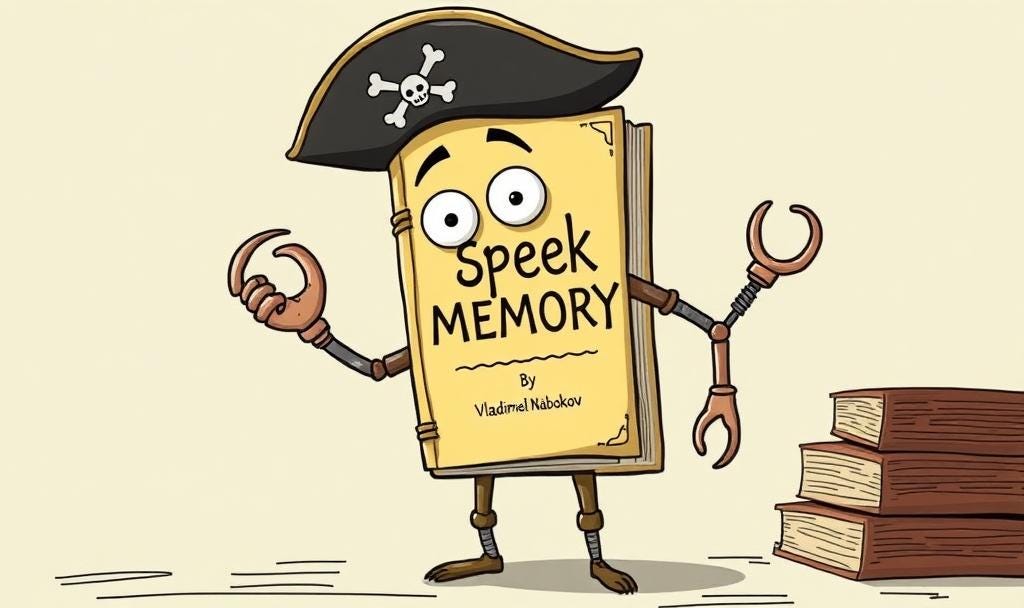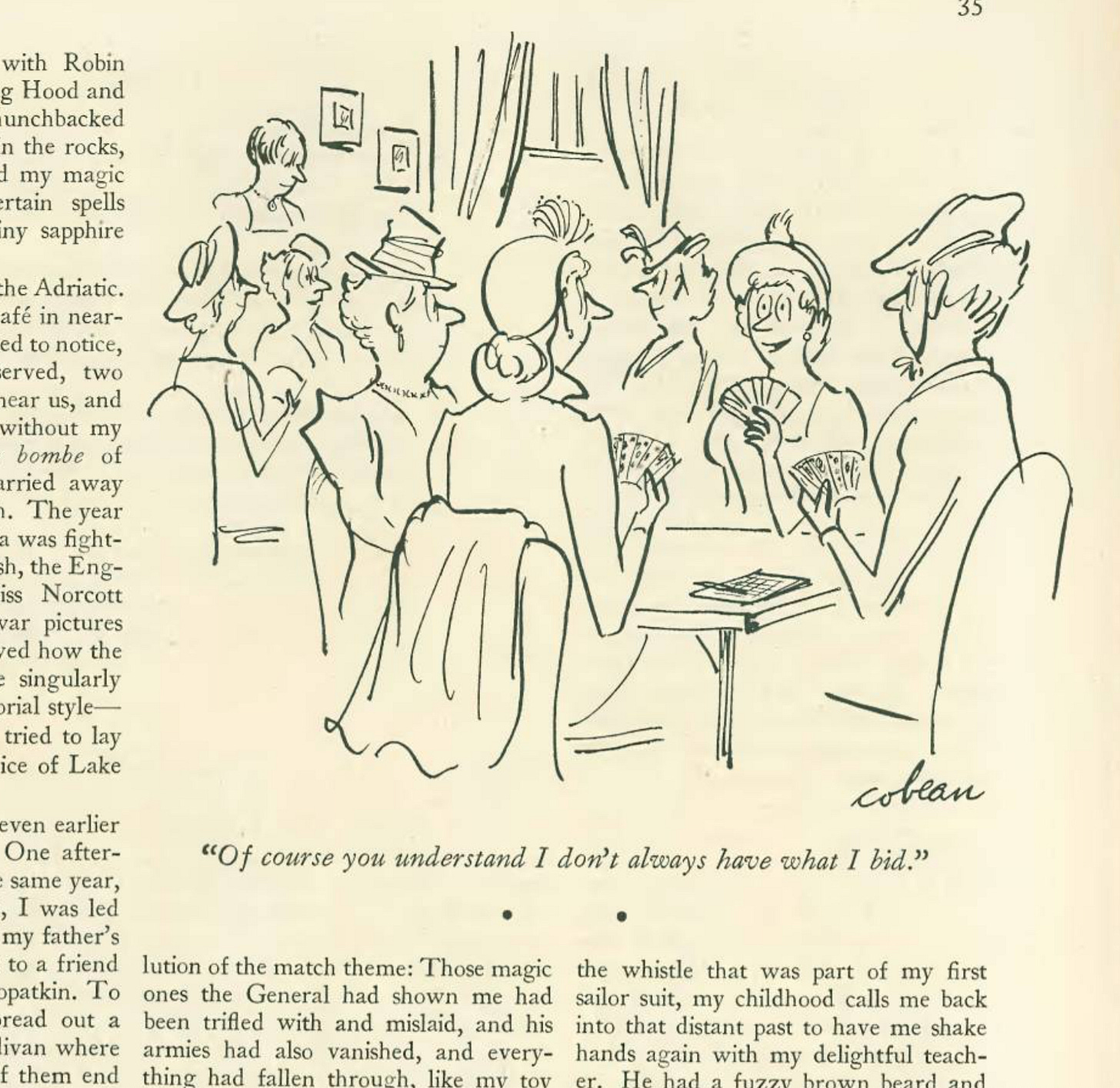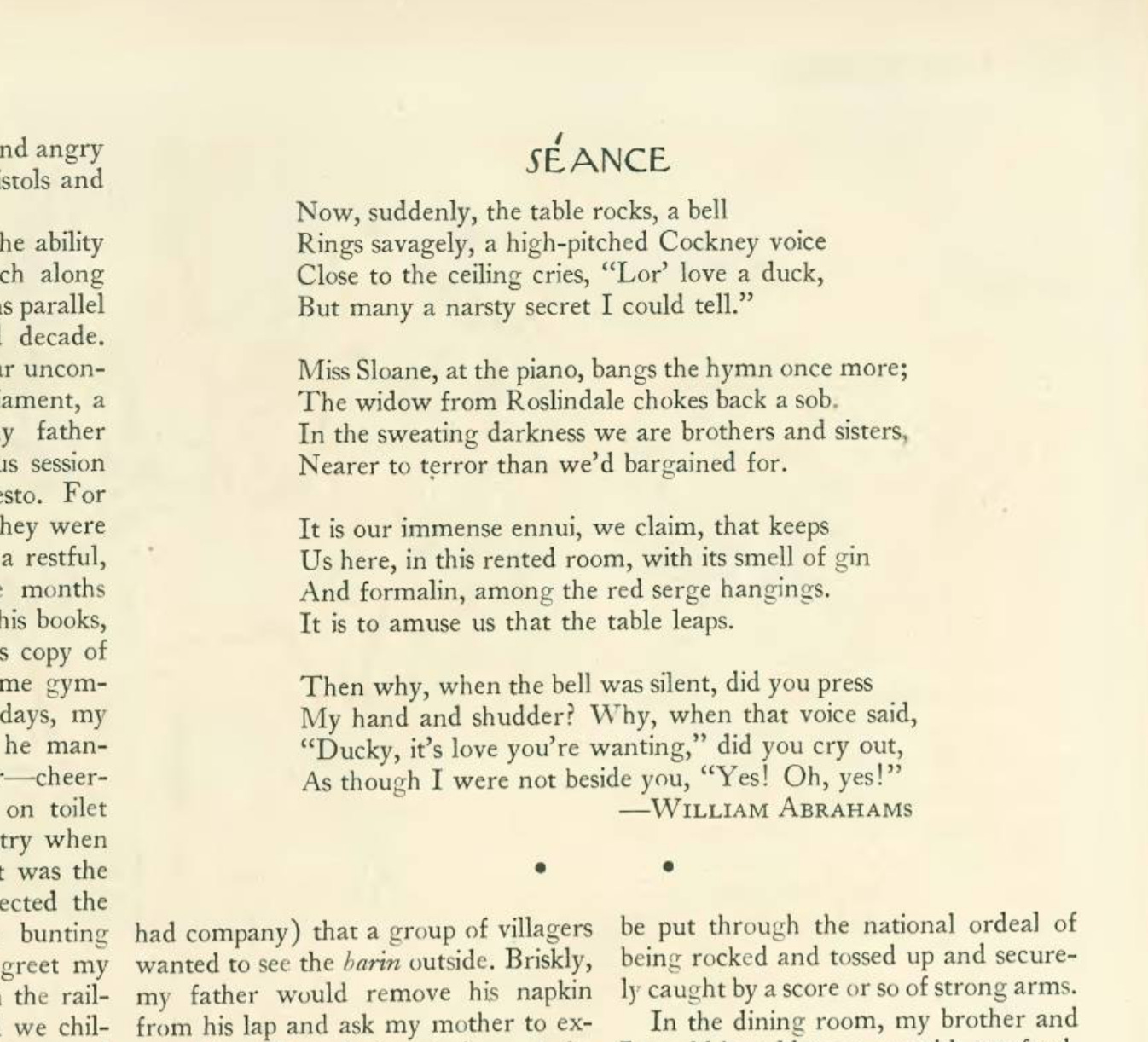Speak, Institutional Memory!
Nabokov at the New Yorker
Attentive readers! Is it me, or is every other day these days the 100th anniversary of some artistic milestone; and, if so, is it a reflection on the media obsession with relevance, such that there has to be a “peg” before you’re allowed to mention anything that happened 10+ minutes ago, or does it simply testify to the incredible cultural efflorescence of the 1920s? Well, either way, one of the things that just turned 100 is The New Yorker, and one way they have been celebrating is by asking contributors to write “takes” on significant pieces from the archives, and my take on Nabokov’s “The Perfect Past” (which eventually became the first chapter of “Conclusive Evidence,” a.k.a. “Speak, Memory”) is out in the issue of June 9.
Plainspoken readers, I will level with you: this is the kind of assignment that tends to rouse my inner slumbering Gen X teen, and if there are two things that young lady objects to, they are (a) being suddenly woken up, and (b) the self-celebratory tendency of venerable institutions. Yet, when I reread “The Perfect Past” in its original page spread (viewable, in theory, here; a digitized version of the text (without columns, cartoons, etc.) is here), I was moved and disarmed. Just seeing that opening line—“The cradle rocks above an abyss, and common sense tells us that our existence is but a brief crack of light between two eternities of darkness”—on a page in the New Yorker from 1950 was already a minor thrill, like seeing a celebrity on the subway.
[You can now find that line quoted in works ranging from “A Very Brief History of Eternity,” to “Remembering and Imagining the Holocaust,” to “Office 365 All-in-One for Dummies”; also “The Objectification Spectrum: Understanding and Transcending Our Diminishment and Dehumanization of Others,” “The Poetic Vision of Robert Penn Warren,” “AARP the Inner Pulse: Unlocking the Secret Code of Sickness and Health,” “Bella Tuscany: The Sweet Life in Italy,” and, maybe most weirdly, “Selected Topics in the History of Biochemistry,” where it appears without quotation marks or attribution. I guess what I’m saying is: everyone loves that line! Everyone finds it “relevant.” No peg. No hook. Pirate quotient: zero.]

But the thing that really impressed me, as I scrolled through the yellowed pdf, was how all the cartoons, and even the poem, seemed to resonate with “The Perfect Past,” as well as with still-unwritten works like “Pale Fire”—through the same spooky transcendent mechanism that I think “The Perfect Past” is about. I mean, I think the project is to undercut the finality of the “two eternities of darkness,” by retracing chains of “thematic resonances” that connect far-apart times and events. (I do find it interesting that “Speak Memory” came out in 1951, the year before Carl Jung published a book about “synchronicity” and acausal connections, based partly on his correspondence with famously legit physicist Wolfgang Pauli.)
Anyway, this is the first cartoon.
I left in some of the surrounding text, which involves some early childhood memories—including, as you can see in the leftmost column, the description of a game where three-year-old Nabokov would race “on rapidly thudding hands and knees” through a pitch-dark tunnel made of sofa cushions… and then he would knock out the last cushion and fall out into the sun-filled drawing room. In the next column, as you can also see, he’s describing a memory of lights seen from an actual train.
When I first saw the actual cartoon, I wasn’t sure I got it; even after mentally filling in the caption, “Christ, what an asshole” (the 2006 meme I will never get sick of), I still felt I was missing something. So I did some research and, thanks to this incredible website, it is now clear to me that the train pictured is the new “dome car” introduced by the Burlington railway in 1945, to such acclaim that forty more such cars had been added by 1950. I think I also know why the train in the cartoon says SILVER on the side. The first dome car was made by cutting a hole in the top of a regular train car, which happened to be called Silver Alchemy, but was renamed Silver Dome. Later trains had names like Silver Castle, Silver Vista, Silver View, etc.
By April 1950, a lot of New Yorker readers would probably have taken dome cars… and maybe one effect was that you were always thinking your head would be knocked off every time you went into a tunnel. Except that it never was! Just like toddler Nabokov caroming through the tunnel, you would come out in the light on the other side.
As soon as I saw the cartoon, I felt 100% certain that someone at the magazine had put it there on purpose, because they really do sometimes choreograph these things in a mysterious Fatelike way that I feel sure must have impressed Nabokov, who later called out Eustace Tilley in the seance scene in “Pale Fire.”
Here’s the other cartoon I mentioned in the piece…
…and here’s the poem.
The more time I spent with on piece, and the more I read about Nabokov’s relationship with the New Yorker, the more sentimental I started to feel about the magazine—especially about Katharine White, Nabokov’s first editor, whose correspondence with Nabokov I found very moving, notwithstanding all the moments when Nabokov is clearly losing his mind. I was particularly struck by how little the editorial process has changed since White (I think?) came up with it. All this made me think back to almost 20 years ago, when I was a broke/ unknown voice-driven writer, and was first given the opportunity to write for the New Yorker. I thought back, too, to what an intense, often baffling, and ultimately rich experience it was to go through the very particular kind of editing that they have been doing there for 100 years.
That’s what I’m going to reflect on, at great length, in the paywalled part of this post.
Thanks for reading!
Keep reading with a 7-day free trial
Subscribe to The Elif Life to keep reading this post and get 7 days of free access to the full post archives.






